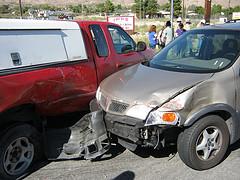
flic.kr/p/axFPp5
Mismatch of the front ends of the vehicles in this crash test is a problem. The SUV’s front-end energy-absorbing structure rides of the car’s. In a real crash, this could increase injury risks for the car occupants, which is why auto manufacturers have been committed since 2003 to designing the front ends of light trucks (SUVs and pickups) so their energy-absorbing structures overlap those of cars (see Status Report, Jan. 3, 2004; on the web at www.iihs.org).
“Compliance with these voluntary commitments already is making a difference, even Read more . . .